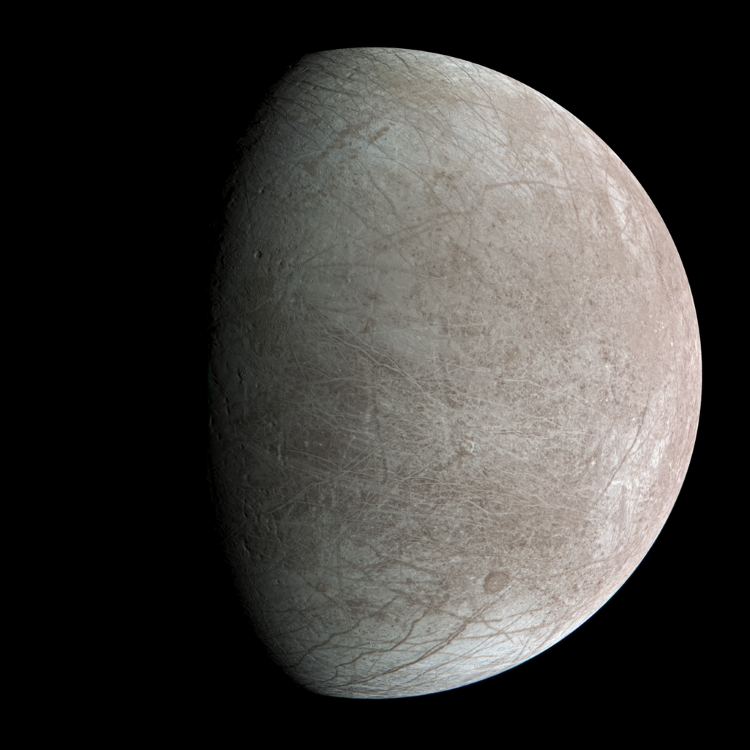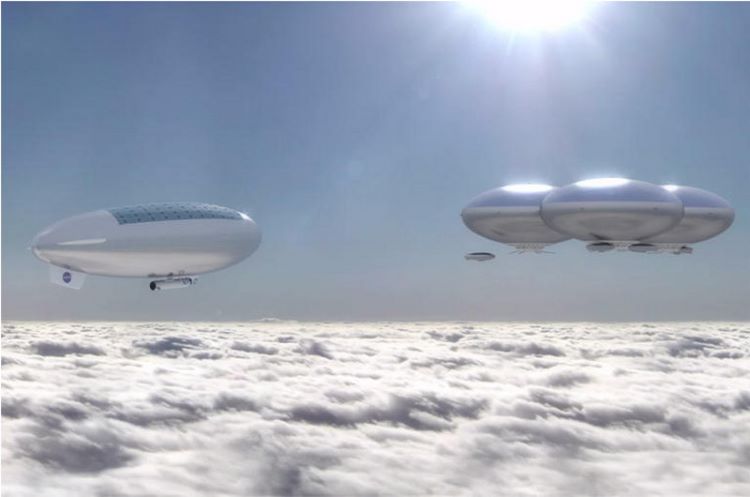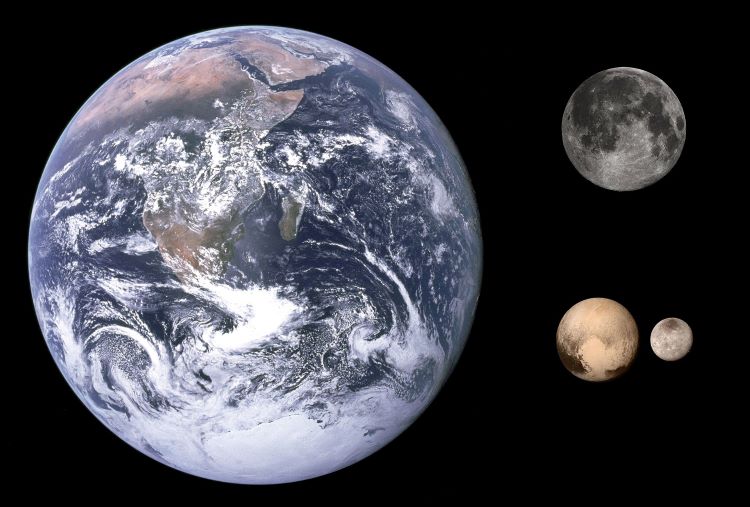After a journey spanning almost two decades, Sierra Nevada Corporation’s Dream Chaser reusable spaceplane, named Tenacity, is officially undergoing environmental testing at NASA’s Neil Armstrong Test Facility located at NASA’s Glenn Research Center in anticipation of its maiden flight to the International Space Station (ISS), currently scheduled for April 2024. The environmental testing consists of analyzing the spacecraft’s ability to withstand rigorous vibrations during launch and re-entry, along with the harsh environment of outer space, including extreme temperature changes and vacuum conditions. This testing comes after Sierra Space announced the completion of Tenacity at its facilities in Louisville, Colorado last month, along with the delivery of Sierra Space’s cargo module, Shooting Star, to the Neil Armstrong Test Facility that same month, as well.
Continue reading “Dream Chaser is Getting Tested at NASA”A Tiny Telescope is Revealing “Hot Jupiter” Secrets

A recent study presented this week at the 2023 meeting of the American Geophysical Union discusses observations of “hot Jupiters” from the NASA-funded CubeSat mission known as the Colorado Ultraviolet Transit Experiment (CUTE). Unlike most exoplanet-hunting telescopes, whose sizes are comparable to a small school bus, CUTE measures 36 centimeters (14 inches) in length, equivalent to the size of a cereal box. These findings come after members of the team, which consists of undergraduate and graduate students, published an overview paper about CUTE in The Astronomical Journal in January 2023 and results from CUTE observing WASP-189b in The Astrophysical Journal Letters in August 2023.
Continue reading “A Tiny Telescope is Revealing “Hot Jupiter” Secrets”The International Space Station Celebrates 25 Years in Space
NASA recently celebrated the 25th anniversary of the International Space Station (ISS) with a space-to-Earth call between the 7-person Expedition 70 crew and outgoing NASA Associate Administrator, Bob Cabana, and ISS Program Manager, Joel Montalbano. On December 6, 1998, the U.S.-built Unity module and the Russian-built Zarya module were mated in the Space Shuttle Endeavour cargo bay, as Endeavour was responsible for launching Unity into orbit that same day, with Zarya having waited in orbit after being launched on November 20 from Kazakhstan.
Continue reading “The International Space Station Celebrates 25 Years in Space”Red Sprites are Best Seen from Space

Planet Earth is full of some truly awe-inspiring spectacles, but few are as intriguing as a sprite, which are officially known as a Transient Luminous Event (TLE) and consist of large-scale electric discharges that shoot upwards while occurring above the cloud tops in the Earth’s mesosphere at approximate altitudes of 50-90 km (31-56 mi). In October 2023, European Space Agency (ESA) astronaut, Dr. Andreas Mogensen, who is currently onboard the International Space Station (ISS) as Commander of the Expedition 70 mission, took an incredible image of a red sprite with the Davis camera as part of the Thor-Davis experiment and his Huginn mission.
Continue reading “Red Sprites are Best Seen from Space”Should We Send Humans to Europa?

Universe Today recently examined the potential for sending humans to the planet Venus despite its extremely harsh surface conditions. But while a human mission to the clouds of Venus could be feasible given the environmental conditions are much more Earth-like, a human mission to the second planet from the Sun could be (at minimum) decades away. With NASA sending humans back to the Moon in the next few years, and hopefully to Mars, what if we could send humans to another planetary body worth exploring, though it could have its own harsh environmental conditions, as well? What about Jupiter’s icy moon, Europa? It has a massive interior liquid ocean that could harbor life, and NASA is currently scheduled to launch its Europa Clipper spacecraft to this small moon in October 2024, arriving at Jupiter in April 2030. Therefore, given the exploration potential, should we send humans to Europa?
Continue reading “Should We Send Humans to Europa?”Europe is Working on a Multi-Purpose Habitat for the Moon

With NASA gearing up to send humans back to the Moon in the next few years with the Artemis missions with the goal of establishing a permanent outpost at the lunar south pole, nations are making efforts to contribute to Artemis and a permanent presence on our nearest celestial neighbor. Recently, the Italian Space Agency, formally known as Agenzia Spaziale Italiana (ASI), has taken steps to establish the first permanent outpost on the lunar surface, known simply as the Multi-Purpose Habitat (MPH). This endeavor was officially kicked by the ASI signing a contract with the French-based aerospace company, Thales Alenia Space, who specializes in space-based systems, including ground segments and satellites used for both Earth observation and space exploration.
Continue reading “Europe is Working on a Multi-Purpose Habitat for the Moon”Should We Send Humans to Venus?

NASA is preparing to send humans back to the Moon with the Artemis missions in the next few years as part of the agency’s Moon to Mars Architecture with the long-term goal of landing humans on the Red Planet sometime in the 2030s or 2040s. But what about sending humans to other worlds of the Solar System? And, why not Venus? It’s closer to Earth than Mars by several tens of millions of kilometers, and despite its extremely harsh surface conditions, previous studies have suggested that life could exist in its clouds. In contrast, we have yet to find any signs of life anywhere on the Red Planet or in its thin atmosphere. So, should we send humans to Venus?
Continue reading “Should We Send Humans to Venus?”Titan Dragonfly is Go!…. for Phase C

The surface exploration of Saturn’s largest moon, Titan, just got one step closer to reality as NASA’s much-anticipated Dragonfly mission recently received approval from the powers that be to advance to Phase C, which is designated as Final Design and Fabrication, according to NASA’s Systems Engineering Handbook. This comes after the Dragonfly team successfully completed all the requirements for Phase B in March 2023, also known as the Preliminary Design Review or Preliminary Design and Technology Completion in the NASA Systems Engineering Handbook.
Continue reading “Titan Dragonfly is Go!…. for Phase C”NASA Tests its Next-Generation Mars Helicopter Blades

While NASA’s Ingenuity Mars Helicopter continues to break records for both airspeed and altitude while it explores Jezero Crater on the Red Planet, NASA engineers back on Earth are hard at work testing carbon fiber blades for next-generation Mars helicopters that could exceed the performance of Ingenuity on future missions to Mars, specifically with the planned Mars Sample Return mission that NASA hopes to accomplish sometime in the 2030s.
Continue reading “NASA Tests its Next-Generation Mars Helicopter Blades”Where are All the Double Planets?

A recent study published in the Monthly Notices of the Royal Astronomical Society examines formation mechanisms for how binary planets—two large planetary bodies orbiting each other—can be produced from a type of tidal heating known as tidal dissipation, or the energy that is shared between two planetary bodies as the orbit close to each other, which the Earth and our Moon experiences. This study comes as the hunt for exomoons and other satellites orbiting exoplanets continues to expand and holds the potential to help astronomers better understand the formation and evolution of exoplanets and their systems. So, why is studying binary planets specifically important?
Continue reading “Where are All the Double Planets?”

